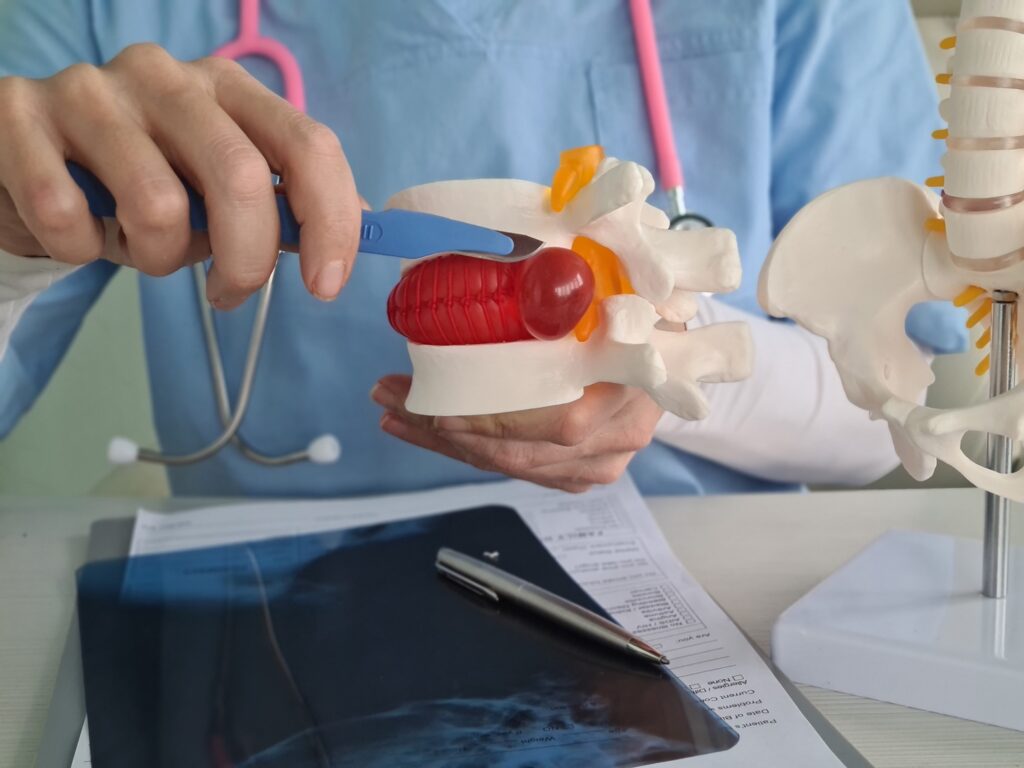Endoscopic thoracic discectomy is a minimally invasive surgical procedure.
It is used to treat pain caused by a herniated disc (bulged, slipped, or ruptured disc) in the spine.
This procedure helps relieve pain, numbness, and weakness in the arms and legs.
Why is Endoscopic Thoracic Discectomy Performed?
Endoscopic thoracic discectomy is performed to remove herniated discs (bulged, slipped, or ruptured discs) in the spine.
It helps alleviate neck and arm pain, numbness, and tingling caused by herniated disc.
The procedure is minimally invasive, so it is associated with less pain and a lower risk of complications than traditional open back surgery.
Preventive Measures to Avoid Endoscopic Thoracic Discectomy
- Maintain a healthy weight and exercise regularly to help strengthen muscles in your back and core.
- Practice good posture and ergonomics when sitting, standing, and lifting.
- Take regular breaks when engaging in activities that involve physical labor or lifting.
- Use good body mechanics when performing activities such as bending, lifting, and twisting.
- Avoid smoking, as it is linked to an increased risk of disc herniation.
- Get regular back pain evaluation by a doctor.
How to Prepare for Endoscopic Thoracic Discectomy?
1. Talk to your doctor about the risks and benefits associated with the procedure
2. Get pre-operative physical exam and tests to evaluate your overall health
3. Follow a healthy diet
4. Get plenty of rest
5. Quit smoking
6. Discuss the medications you use with your doctor before your procedure
Your doctor will also review your medical history to determine if the procedure is a safe option for you.
What to Expect During Endoscopic Thoracic Discectomy?
Endoscopic thoracic discectomy is a minimally invasive surgical procedure.
The procedure involves a surgeon making a small incision in the chest and inserting a tiny endoscope and other tools to remove the herniated disc.
The procedure typically takes 2-3 hours, and you can go home the same day.
What to Expect After Endoscopic Thoracic Discectomy?
You will likely experience some discomfort and soreness for a few days.
Your doctor will prescribe pain medication and antibiotics to help manage pain and prevent infections.
Your doctor may also recommend physical therapy and a brace or corset for 4-6 weeks to help you regain strength and flexibility.
After Endoscopic thoracic Discectomy: When to Seek Help?
- Pain that does not subside
- Numbness or tingling in the arms or legs
- Redness or swelling at the site of the incision
- Fever, or difficulty breathing
Things to Avoid After Endoscopic Thoracic Discectomy
- Heavy lifting (at least 4-6 weeks after surgery)
- Smoking and drinking alcohol
- Engaging in vigorous activities
- Exercises that put pressure on the spine
- Driving (for a few weeks after surgery)
- Sitting in one position for a long time
Endoscopic Thoracic Discectomy: Post-Operative Care
- Pain Management (Take medication as prescribed by your doctor)
- Activity Restrictions (Avoid lifting, pushing, or pulling objects that are too heavy)
- Wear a brace or support device, if recommended
- Go for physical therapy
- Keep the incisions clean and dry
- Check for signs of infection, such as redness, swelling, warmth, or a fever
- Monitor Your vital Signs

